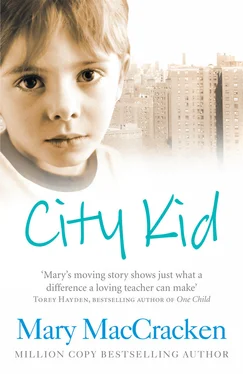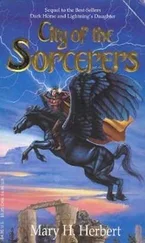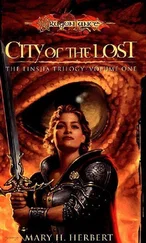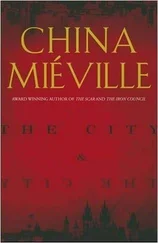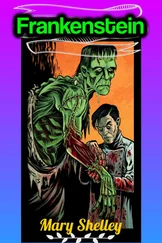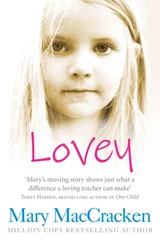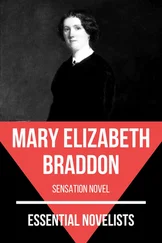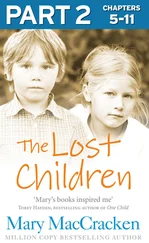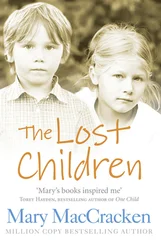
This book recounts the essence of my experience and in that sense is a true story. However, it is not intended as a literal account and it is not to be taken as a portrayal of any living person. All names of individuals, places or institutions are fictitious.
HarperElement
An imprint of HarperCollins Publishers
77–85 Fulham Palace Road,
Hammersmith, London W6 8JB
www.harpercollins.co.uk

and HarperElement are trademarks of
HarperCollins Publishers Ltd
First published in Great Britain by Little, Brown & Company, Inc, 1981
This updated edition published by HarperElement 2014
Copyright © 1981, 2014 by Mary Burnham MacCraken 2014
Mary MacCracken asserts the moral right to
be identified as the author of this work
Cover layout design © HarperCollins Publishers Ltd 2014
Cover photograph © Diane Kerpan/Arcangel Images (posed by model)
Mary MacCracken asserts the moral right to
be identified as the author of this work
All rights reserved under International and Pan-American Copyright Conventions. By payment of the required fees, you have been granted the non-exclusive, non-transferable right to access and read the text of this ebook on-screen. No part of this text may be reproduced, transmitted, downloaded, decompiled, reverse engineered, or stored in or introduced into any information storage and retrieval system, in any form or by any means, whether electronic or mechanical, now known or hereinafter invented, without the express written permission of HarperCollins ebooks.
Find out about HarperCollins and the environment at
www.harpercollins.co.uk/green
Source ISBN: 9780007555161
Ebook Edition © August 2014 ISBN: 9780007555178
Version 2014-07-22
For Cal:
who believed in me
Cover
Title Page
Copyright
Dedication
The Fire Within
Chapter 1
Chapter 2
Chapter 3
Chapter 4
Chapter 5
Chapter 6
Chapter 7
Chapter 8
Chapter 9
Chapter 10
Chapter 11
Chapter 12
Chapter 13
Chapter 14
Chapter 15
Chapter 16
Chapter 17
Chapter 18
Chapter 19
Chapter 20
Chapter 21
Chapter 22
Chapter 23
Chapter 24
Chapter 25
Chapter 26
Chapter 27
Chapter 28
Chapter 29
Chapter 30
Chapter 31
Chapter 32
Chapter 33
Afterword
Coming soon …
Exclusive sample chapter
Also by Mary MacCracken
Moving Memoirs eNewsletter
About the Publisher
“Luke,” I said, “why do you like to start fires?” “Don’t know,” Luke said. “Just like to watch ’em. They’re pretty, all red and blue and orange, dancin’ around.”
“The big fire last fall? Did you set that?”
Luke smiled – and I hated that smile. “That one was real pretty. It kept on gettin’ bigger and bigger ’til it was taller than me.” Luke paused. There was no guilt or repentance in his voice, only admiration for the fire. “The cops came, then the fire trucks, but they couldn’t put it out – it just kept goin’.”
His voice sounded hard and cruel, not like Luke’s at all.
There was a fire burning within this seven-and-a-half-year-old boy – a fire that would destroy him if a dedicated but near-despairing teacher couldn’t find what fueled it and how to put it out.
“Which one is Luke?” I whispered.
“There, next to my desk,” Lisa answered. “The one not working, of course. He doesn’t even answer when his name is called. Listen, I’ve got to go. Talk to you later.”
Lisa walked to the front of the classroom to continue the math lesson I’d interrupted. I sat on a radiator cover and studied Luke.
I couldn’t believe it. When they had told us at college that we’d be working with children who were socially maladjusted juvenile delinquents, I conjured up images of burly kids with bulging muscles and perpetual sneers. And now here was this little boy in second grade who couldn’t be more than seven years old.
I peered at him intently, saying his name under my breath, “Lucas Brauer, Lucas Brauer,” trying to make him real. He shifted slightly in his seat and I could see that his brown hair curved around his cheeks, so that from this angle he looked almost like a girl.
There must be some mistake, I thought. How could this child have a record of twenty-four arrests for arson, theft, and truancy? I shook my head. Something was wrong somewhere.
But if something was wrong, something was also right. For the first time in months, I felt the beginnings of the familiar, soaring, ridiculous excitement that came with teaching – a feeling I’d almost forgotten since I’d become a student at the state teachers’ college.
I had entered in September, full of hope and determination. By February I was full of disillusionment. In fact, until that day when I found Luke, I wasn’t sure I could make it through one year, much less two.
So now I memorized him – the scruffy sneakers half the size of mine, the faded jeans torn at the knees, a plaid shirt with one button missing, and each inch of his small profile. I could help Luke, now that I’d found him. I knew I could, and he would help me, too. He would make me remember there was some reason for the endless empty courses, the meaningless assignments, and the foolish terror of exams.
I had known it wouldn’t be easy, going back to college at age forty-four. In 1970 the movement for continuing education had not yet become popular and ninety-nine percent of the members of the junior class at Union State College were under twenty years old. They walked the campus in pairs or clumps, ate in noisy groups at the student union, shouted cheerfully at one another over the blare of rock that poured from speakers mounted in the ceiling. I walked alone, ate my cheese and apple in my old convertible, and tried to learn to be heard over the sounds of the Grateful Dead.
That was all okay. I was there to get a degree, to get certified so that I could continue teaching, not to develop my social life. I had remarried in June and the excitement of living with Cal and trying to blend our combined seven kids, aged fifteen to twenty-seven, into some kind of homogeneous group was challenging and absorbing. None of the children lived at home full time, but they arrived in bunches on weekends and vacations and filled our apartment or country house with excitement, laughter, and dirty laundry.
It would be difficult to give up teaching and go back to college after a twenty-five-year interval between sophomore and junior years, but it was also the one way I could continue to teach. What I hadn’t expected was the stifling boredom, the frustration of hours spent taking courses that had nothing to do with teaching, and most of all, the overpowering, unending longing for the troubled children I had taught.
I had been teaching seriously emotionally disturbed children full time for more than six years, when the school where I taught became “state approved” and its teachers had to be fully certified. I had no certification, only two years at Wellesley and some night-school education credits. Not enough. I had to leave because the only way I could continue to work as a teacher was to get a bachelor’s degree in education, and certification. I could get my degree and dual certification in elementary and special education in two years going full time during the day; it would take six years at night school. At my age there was no choice.
Читать дальше
